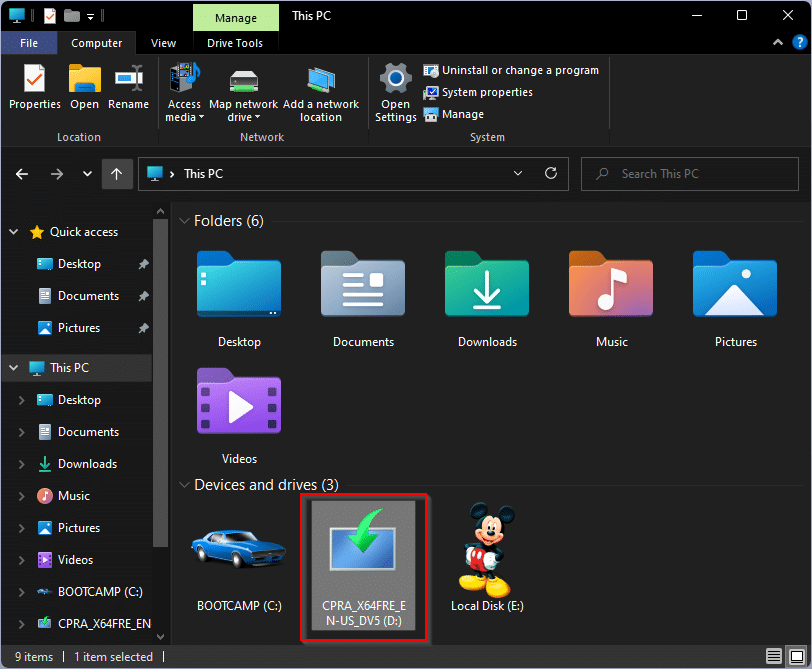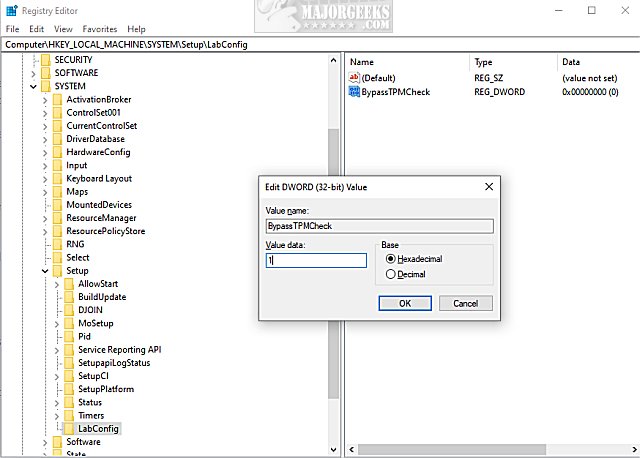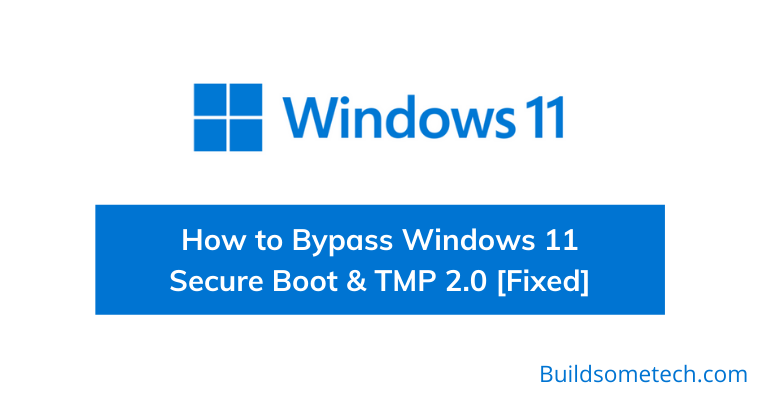TPM, Secure Boot and CPU requirements check and installing Windows 11 on unsupported hardware devices. A 3rd party software "Rufus" allows users to create Windows 11 bootable USB and disable all hardware requirements check which are performed by Windows 11 setup at installation time. The rest of the process is just like any regular old bootable USB installation. Attach the USB drive to the system you want to upgrade to Windows 11, and boot it up. You can now boot into the Windows 11 bootable USB by bringing up your Boot device menu by pressing the boot options key specific to your system.
It's usually the Delete key or one of the function keys. You can look up the key binding specific to your system. Once the boot device menu shows up, select the USB drive, and follow the Windows 11 installation setup. There is another way to disable Windows 11 hardware requirements check and create a bootable USB drive from Windows 11 ISO file.
You can use the bootable USB drive to clean install Windows 11 in your system. Use the PC Health Check app to find out if your system can run Windows 11. If you have an old computer that isn't supported by the new OS, take a look at our instructions where we show you how to install Windows 11 without TPM 2.0.
There are several ways to do that, and now we have another option to bypass the restrictions, thanks to Rufus. The popular bootable media creation tool was updated over the weekend, to a beta version. Rufus Beta 2 lets you disable TMP, Secure Boot and RAM requirements for Windows 11.
Microsoft allows you to install Windows 11 via a registry hack but that is not the only way to bypass the requirements checks like TPM 2.0, Secure boot, and more. Because you can create a bootable Windows 11 USB drive using Rufus and use it to install Windows 11 on any unsupported PC. The Windows11 installation process has become increasingly more complicated. With the release of Microsoft's latest operating system, it is even more challenging to install. Several new security features make it harder for users to bypass the activation process and make unauthorized changes to their PC.
This article will introduce Rufus Beta, a tool that simplifies the creation of bootable USB drives and can overcome activation locks and install Windows11 without generating any errors. Are you eager to update Windows 10 to the brand new Windows 11, but your PC or laptop can not meet the minimum requirement from Microsoft? If you really can't do the above or just want to take the new OS for a test drive, however, this is how you install Windows 11 on unsupported hardware. According to the minimum system requirements for Windows 11, the harsh ones are mainly the demand for UEFI secure boot firmware settings and a TPM 2.0 chip. Even though some old devices are capable enough to match a UEFI firmware, their TPM version is still at 1.0. Can those devices that lack the essential TPM 2.0 requirement still get the Windows 11 update?
Is there any way to bypass TPM 2.0 and get Windows 11 free upgrade from Windows 10? Here we come, with a feasible solution for you. Navigate to the downloaded Windows 11 ISO file, and select it. Your final Rufus screen should look something like this.
You'll now see "Install Now" window again. Again follow the setup process such as selecting installation type, etc and now Windows 11 will install without any error message as we have disabled hardware check using Registry tweak. Getting error This PC can't run Windows 11 while trying to install the latest windows 11 preview build on your computer? You are not alone, several users report This PC can't run Windows 11 error even their computer meets Windows 11 system requirements.
And in order to install the latest Windows 11 preview builds on your computer, you must fix both or one of errors. Keep reading the article to resolve this pc can't run Windows 11 error. Many Windows users were disappointed that they had to either purchase a new PC or adjust further with Windows 10 operating system only. That means even Windows 10 genuine users can not upgrade from Windows 10 to Windows 11. We have already provided an article to install Windows 11 without TPM 2.0 and Secure Boot, but it basically a long procedure.
You need Windows 10 as well as Windows 11 ISO files and then have to replace various Windows 11 ISO files with Windows 10. Further, I notice during the installation of Windows 11 in several windows it was showing Windows 10. I was not really happy, and then further, I started testing for new options. Finally, I got success and decided to write this article.
Created one uefi boot usb and one legacy bios usb and installed both - both running really well. Used the uefi one on a 5th Generation, touchscreen HP Spectre X360. Install was tricky at first because it wouldn't recognise my wifi - but did recognise mobile wifi so used my phone as wifi hotspot to install. Also no graphics driver at time of install but it found that after updates done. #4Magically the script now opens the Windows media creation tool and starts downloading the Windows 11 ISO file. This is what basically happens, the tool fetches the windows 11 ESD file later it converts it to an ISO file while applying the TPM, CPU, and secure boot bypass.
Windows 11 is the new gossip topic, it's already here and very soon we might see Android app support. Earlier we've covered a similar topic where we installed Windows 11 on a Legacy BIOS without TPM 2 and Secure boot. Microsoft offers several ways to download Windows 11 manually. One is to use the Installation Assistant app, which you install on your PC to trigger a normal upgrade install via Windows Update.
The second is to use the Windows 11 Media Creation Tool, which automates the process of creating a bootable USB install drive or downloading an install ISO file. Once you have a USB drive, you can either boot from it to perform a clean install or run the Setup app from within Windows 10 to do a normal upgrade install. You can also burn the ISO to a DVD, but installing from any USB drive, even an old USB 2.0 drive, will be much faster, so you shouldn't do that. Finally, you can just download an ISO file directly from Microsoft's site. If a device doesn't contain TPM 2.0 chip, Secure Boot or other hardware requirements, you can't install Windows 11 in the device.
If you try to install or upgrade to Windows 11, you get various error messages as mentioned below. Rufus is a free, open-source utility that can convert an ISO image into a bootable USB drive. It works on all Windows OS from XP up and supports GPT partitioning schemes for larger hard drives. The latest beta release of the application adds support for Windows 11 with Secure Boot enabled so your PC boots in UEFI mode if it's compatible with the new OS version. It should help you secure your BIOS against malware attacks while also making sure to disable TPM . If you cannot use PGP due to hardware or software incompatibilities, then TPM is the second-best alternative.
When finished, close the registry editor window and then restart the computer. According to the minimum requirements of installing Windows 11, the computer needs to support TPM and Secure Boot. If you are in UEFI BIOS mode, you can easily enable the two options. But if you are in Legacy Windows 11 mode, there is no way to do that. So we need to modify some registry keys values on the Windows PC to clean install Windows 11 without Secure Boot and TPM 2.0. The following methods need a Windows 11 ISO file to work.
With Rufus, a free utility, you can create a Windows 11 install disk on a USB Flash drive with settings that disable the TPM, RAM and CPU requirements. You can either boot off of this USB Flash drive to do a clean Windows 11 install or run the setup file off of the drive from within Windows 10 to do an in-place upgrade. If you're interested in a clean install of the latest version of Windows 11 on a computer from a bootable USB, try this method here. EaseUS Win11 Builder can automatically detect and find the latest genuine Windows 11 update from Microsoft and helps you to create a bootable USB drive for installing Windows 11 successfully. Once the download is complete, click on the image option and choose "Extended Windows 11 installation" to disable the TPM, secure boot and the 8GB RAM requirements.
You can use the Rufus utility to create a bootable USB with settings that disable TPM requirements. This setting also disables RAM and CPU requirements, essentially making your installation media compatible with almost all devices that fall short of Microsoft's requirements. Luckily, there are ways to install Windows 11 on unsupported hardware. It requires you to bypass the security and hardware requirement checks in Windows 11. This means that you will essentially be losing some of the promised safety appeal that Microsoft is promising here.
However, if you really, badly want to upgrade to Windows 11, it'll do the trick. Here's how to install Windows 11 on unsupported hardware. Now create the BypassSecureBootCheck and BypassRamCheck values and set them to 1. You will now return to the page where you need to select the version of the Windows 11 you wish to install.
You can now proceed to install Windows 11 having bypassed all the hardware and TPM requirements. We'll replace all setup files (except Install.esd) present in Windows 11 setup with Windows 10 setup files. In this way, we'll use Windows 10 setup installer to install Windows 11 in our system. Windows 10 and Windows 11 use same setup installer.
Since we are using Windows 10 installer for Windows 11, it'll not check for Windows 11 hardware requirements such as TPM 2.0, Secure boot, etc. We are keeping Windows 11's Install.esd file which is the actual file containing all Windows 11 program files and system files. Be sure to check the drop down menu for MBR to make it bootable for legacy bios and click Start to create your custom installation media. I had Windows 10 very sluggish and I wiped up the whole disk and clean install Windows 11 with the bootable iso. The old machine looks brilliant snappy NEW all the drivers were installed and also all the updated yesterday and today were performed. You don't have to do any of this lol I legit just made a bootable USB from the media creation tool for windows 11 after upgrading my personal machine.
And I have installed this on 20+ machines by just booting into the drive. You don't need to do anything special for it. I've installed Windows 11 on an ancient core2duo without issues.
Many users want to upgrade to Windows 11 to experience the new operating system. However, the minimum system requirements restrict everyone from doing so, especially users who are using the older PCs. You can still upgrade to Windows 11 by tweaking your PCs registry. However, installing Windows 11 on PCs without TPM compromises the security aspect. You can even miss out on feature-based and security updates on such PCs in the future.
This method is difficult and prone to error, but it's the only method to install Windows 11 on very old PCs with legacy BIOS. We are going to use a Windows 10 bootable USB drive and edit it to install Windows 11 instead. The installer will think it's installing Windows 10 and check for the same requirements, but Windows 11 will be installed instead. If you want to use this ISO to upgrade Windows 10 to Windows 11 dynamically from a running system, you will additionally need to activate the TPM bypass shown in method 4 below. Knowing that some users will want to install Windows 11 on systems that don't meet all of its hardware requirements, Microsoft has provided a registry hack that loosens them up somewhat. Using this hack, you can install on a system that has at least TPM 1.2 and has an unsupported CPU.
That said, we recommend the scripts above because they don't require you to have TPM of any kind. Fortunately, there is a simple way you can create a Windows 11 USB install disk that will bypass not only Windows 11's TPM requirement, but also its need for 8GB of RAM and a supported CPU. Using a free tool called Rufus and at least a 16GB Flash drive, you can either perform an in-place upgrade of Windows 10 to 11 or a Windows 11 clean install while getting around these minimums.
In the first section of our tutorial below, we'll show you how to use Rufus to create a requirement-free Windows 11 install disc. Microsoft has some strict hardware requirements that your PC must meet to install Windows 11, including TPM 2.0 support. This means that not only older computers, but virtual machines will refuse to upgrade from Windows 10, giving you a message that "this PC doesn't currently meet Windows 11 system requirements." Fortunately, the most recent version will tell you if TPM is the problem.
You might run into this issue if you built your PC yourself or got someone else to do it for you. Many motherboards are TPM compatible, but some gaming motherboards skimped on the feature in favor of other bells and whistles. Did you select MBR bios from the drop down menu ? To make the windows 11 bootable on legacy bios? If you made it for uefi bios and your machine doesn't have uefi, that might be the issue.
Both the downloaded win11 iso and an iso created by the mct work fine for me, using the release (i.e. not the beta) rufus 3.16. No problem installing in a not-supported vm running on a not-supported host with either usb. Although, Microsoft has promised to skip the TPM 2.0 or Secure Boot check when installing Windows 11 on computers with configurations that do not meet the requirements.
To install a new operating system, simply edit the Windows Registry during installation. An error message will appear on your screen if you attempt to install the new OS on an unsupported device. It is possible to install Windows 11 even if your PC doesn't meet the minimum system requirements of Windows 11. With Windows 11, Microsoft unveiled a set of stringent requirements for upgradeable PCs, including having TPM 2.0. These requirements locked out many PC users, but not anymore. In this article, we take a look at the TPM module, why it matters, how to check for it on your device and how to bypass it and install Windows 11.
Microsoft has been back and forth about the minimum system requirements that a system will need for Windows 11. For a desktop with multiple drives, you may want to power off and unplug the extra ones before choosing where to install. It's all too easy to press the wrong button and wipe out data, and we'd hate for that to happen to you. However, if not, you'll have to opt for a Windows 11 clean install. A clean installation of Windows 11 will work on most hardware, but it does come with caveats. Notably, Microsoft has repeatedly stated that it will not provide updates to Windows 11 installations on "unsupported" hardware, so you install at your own risk.
If you can't or don't want to edit the Registry, you can also create a bootable Windows 11 USB or DVD that won't check for TPM 2.0 or Secure Boot support. This option is also much better if you need to install Windows 11 on multiple unsupported PCs, as you won't have to modify each PC to make it compatible with Windows 11. It should be noted before you continue that these steps apply to just those with a modern Windows computer that can't go the typical upgrade route due to the lack of TPM 2.0.































No comments:
Post a Comment
Note: Only a member of this blog may post a comment.